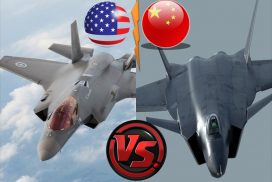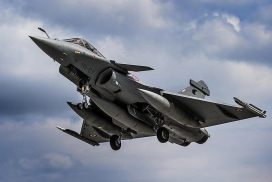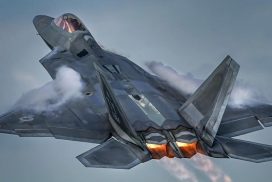Traditional aircraft maneuvering is accomplished by altering the flow of passing air over the control surfaces of the aircraft – the ailerons, elevators, flaps, air brakes and rudder. Some of these control surfaces are combined, such as in the “rudder-vaters” of a V-tail configuration; the basic properties are unaffected. When a control surface is moved to present an angle to the oncoming airflow, the control surface redirects the air in a different direction and, by Newton’s Third Law, an equal, opposing force is applied by the air to the control surface and thus the aircraft. The angle and thus the directional forces on the aircraft are is controllable by the pilot to maintain the desired altitude, such as pitch, roll and heading, and also to perform aerobatic maneuvers that rapidly change the aircraft’s attitude. For traditional maneuvering control to be maintained, the aircraft must maintain sufficient forward velocity and a sufficiently low angle of attack to provide airflow over the top of the wings (maintaining lift) and also over its control surfaces. If there is insufficient airflow, maneuverability is decreased and, as the velocity drops to less than that required to produce sufficient lift in the aircraft’s current attitude, the airplane will stall.br /br /The speed at which an aircraft is capable of its maximum aerodynamic maneuverability is known as the corner airspeed; at any greater speed the control surfaces cannot operate at maximum effect due to either airframe stresses or induced instability from turbulent airflow over the control surface. At lower speeds the redirection of air over control surfaces, and thus the force applied to maneuver the aircraft, is reduced below the airframe’s maximum capacity and thus the aircraft will not turn at its maximum rate. It is therefore desirable in aerobatic maneuvering to maintain corner velocity.br /br /The speed below which the aircraft cannot maintain flight in its current configuration (throttle, attitude, configuration of brakes/flaps/landing gear) is known as the stall speed; below the stall speed, the aircraft becomes uncontrollable and/or cannot maintain lift at its current angle of attack; it will lose altitude and thus gather speed until either sufficient velocity is attained in the same axis as the nose of the plane to maintain lift and control, or the aircraft crashes into the ground. Stalls are therefore to be avoided in aerobatic maneuvering, especially in combat, as a stall permits an opponent to gain an advantageous position while the stalled aircraft’s pilot attempts to recover. Stalls are also an indicator of insufficient maneuvering energy; an aircraft that is out of energy cannot turn or climb and is at a disadvantage to an opponent.br /br /In an aircraft possessing supermaneuverability, the pilot is able to maintain a high degree of maneuverability below corner velocity, and at least limited attitude control without altitude loss below stall speed. Such an aircraft is capable of maneuvers that are impossible with a purely aerodynamic design.
Menu
Copyright © 2007- 2025 • Defence Aviation • All Rights Reserved. Reproduction without explicit permission is prohibited.



